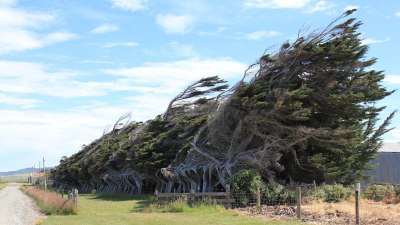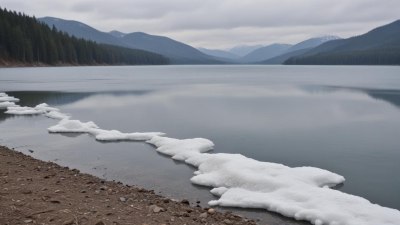Why March Winds Can Be the Strongest of the Year
Discover the reasons behind the intense winds of March, a month known for its powerful gusts and weather changes.

March is a transitional month that serves as a bridge between winter and spring. With the change of seasons comes a significant shift in weather patterns, which often results in some of the strongest winds of the year. Understanding why March winds can be so fierce requires looking at the atmospheric conditions, temperature fluctuations, and geographical factors that come into play during this time.
One of the primary reasons for strong March winds is the stark contrast in temperatures between winter chill and the onset of spring warmth. As winter begins to wane, the sun's rays become more direct, causing a rapid warming of the earth's surface. However, remnants of cold air still linger, particularly in the northern regions where snow cover can significantly influence weather systems. This thermal gradient creates a pressure difference, leading to strong winds as air moves from high-pressure areas to low-pressure systems.
The meteorological phenomenon known as the 'jet stream' also plays a crucial role in March winds. The polar jet stream, which is the band of strong winds high in the atmosphere, often dips southward during this month. This dip can create strong storms and significant wind events as it interacts with warmer air masses from the south. When these two air masses collide, the difference in pressure can lead to powerful gusts and turbulent weather patterns typical of early spring.
Effects of Storm Systems
March is notorious for its storm systems, which can include a mix of snow, rain, and severe thunderstorms. These systems can bring challenges such as flash flooding, tornadoes, and high winds. As storm systems develop, they can generate intense pressure gradients that accelerate winds, especially as they approach or move away from land areas. For example, coastal storms can create strong onshore winds, while inland storms may bring severe gusts that can topple trees and damage structures.
Additionally, the occurrence of Nor'easters—a type of powerful storm commonly seen in March—further illustrates how winds can reach their peak intensity during this month. These storms typically form along the eastern seaboard and bring along heavy precipitation as well as high winds. The interaction between cold air from Canada and warm air from the Atlantic Ocean creates a volatile environment ripe for strong wind events.
Geographical Influence
Geography contributes significantly to the intensity of March winds. In regions such as the Great Plains, the absence of natural barriers like mountains and forests allows winds to travel unimpeded, resulting in exceptionally strong gusts. The flat terrain of the plains can amplify wind speeds, particularly when coupled with storm systems that sweep across the area. Similarly, valleys and canyons can channel wind, creating localized areas of intense gusts that can be hazardous.
In contrast, coastal areas experience winds that can be influenced by sea breezes and the temperature differences between land and water. As the land heats up faster than the sea, air pressure over land decreases, causing winds to blow in from the cooler ocean. This can lead to unpredictable wind patterns, particularly in coastal communities where March storms often make landfall.
Impact on Weather Conditions
The strong winds encountered in March can have a wide range of effects on local weather conditions and ecosystems. For farmers, the wind can aid in drying out fields after winter moisture but can also exacerbate soil erosion and disrupt planting schedules. Additionally, strong winds can enhance evaporation rates, which may lead to drier conditions in certain areas, impacting water availability.
From a wildlife perspective, the sudden onset of strong winds can affect animal migration patterns and nesting behaviors. Many migratory birds begin their journey north during March, and strong winds can either aid or hinder their progress. Similarly, ground-nesting birds may find their nests at risk due to gusty conditions, leading to population fluctuations in some areas.
Climate Change Considerations
The discussion of March winds cannot be fully complete without considering the implications of climate change. As global temperatures rise, weather patterns are becoming increasingly erratic, influencing the behavior of the jet stream and storm systems. Some studies suggest that the frequency and intensity of spring storms, including wind events, may increase in certain regions as a result of changing climates.
As the planet warms, the thermodynamic properties of the atmosphere may also change, leading to more pronounced temperature gradients and consequently stronger winds. The unpredictability of these shifts can pose challenges for meteorologists as they attempt to forecast wind events accurately, which is crucial for public safety and preparedness.
Adverse Effects and Safety Precautions
Strong winds can pose several risks, from property damage to personal safety. During particularly windy days, it is essential to stay informed about local weather conditions and heed advice from local authorities. People in areas prone to high winds should secure outdoor objects, avoid parking under trees, and be cautious when driving, especially in high-profile vehicles.
Communities can also benefit from preparedness measures, such as establishing emergency response plans that account for wind-related emergencies. Educational programs aimed at raising awareness of the dangers posed by strong winds can help individuals and families become more resilient to adverse weather events.
In conclusion, March winds are the result of a complex interplay of atmospheric conditions, geographical features, and seasonal transitions. Understanding the forces behind these strong winds can enhance our appreciation for the power of nature and the importance of weather forecasting. Whether heralding the arrival of spring or leaving behind a trail of damage, March winds are a powerful reminder of the ever-changing climate we live in.











